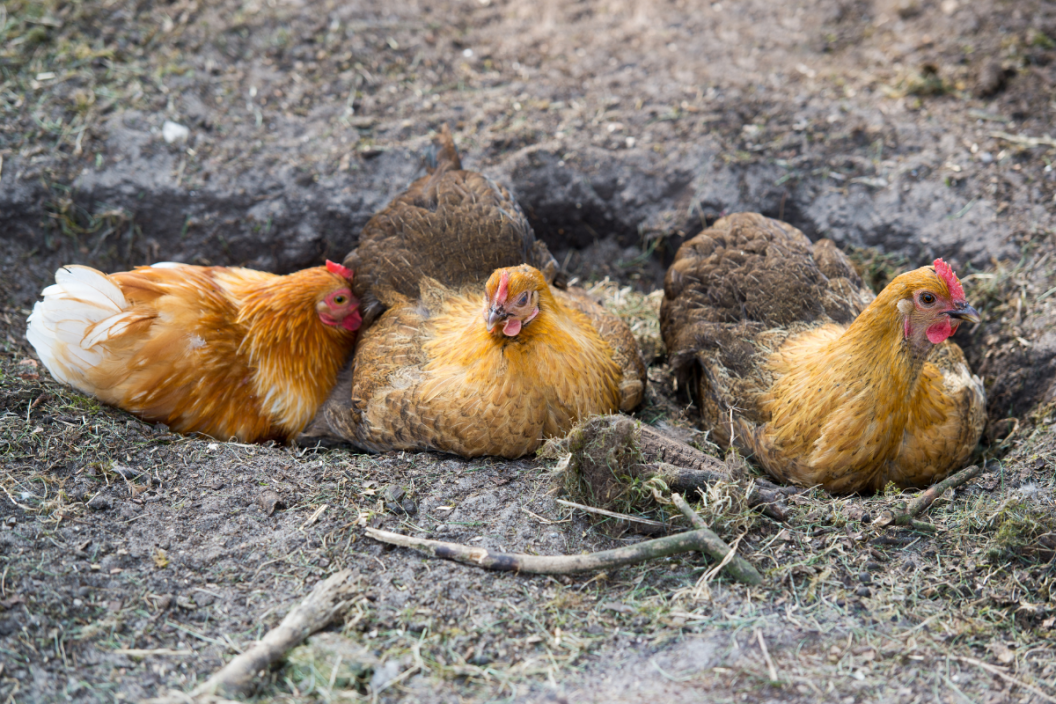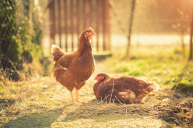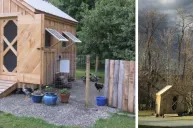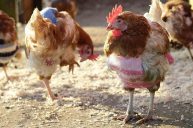If you are a new chicken keeper, you might be quite amused, and even curious, when you see your chicken take a dust bath for the first time. Here is everything you need to know about chicken dust baths.
Chickens get dirty to take a bath! Most backyard chicken owners will remember the first time they saw a chicken taking a dust bath. A chicken crouched or leaning in a hollowed-out spot of bare dirt, wildly scratching and fluffing wings in a cloud of dirt is pretty memorable if you are seeing it for the first (or even the twelfth or hundredth) time.
It might look as if the chicken is in trouble at first, but really it's just a chicken version of dry shampoo, also known as the chicken dust bath! Chickens clean their feathers and skin by preening with their beak and with a thorough wiggle and shake in plain old dirt.
Why dirt? A chicken dust bath helps to remove excess oil, as well as external parasites like lice, fleas, and mites. A dirt bath also maintains the water resistance of the outer feathers of a chicken. Dust bathing is an important part of keeping chickens healthy and clean.
Read on for two excellent DIY ways to make sure your chickens have access to dust baths no matter what the weather, and in winter as well as summer.
How Does a Chicken Dust Bath Work?
Chickens will create a dust bath area all by themselves. A chicken scratches and digs out a bowl-shaped depression in dirt or even in coop sand or shavings. The chicken settles into this hollow, fluffs up its feathers, and then scratches up loose dirt, sand, or litter through fluffed feathers. Chickens use their feet and wings and wiggle to get loose dirt throughout their skin and feathers. Once thoroughly coated in a layer of dirt, the bird will fluff and shake to further distribute and "shake off" the dirt.
Voila! All that dirt actually makes for a cleaner chicken!
Because the dust bathing area is generally a hollowed-out, circular area in the ground, it might look like the chicken is making a nest to lay eggs, but this is not a nest, it's a dust bath spot. Free-range chickens will make a dust bath area anywhere they find a sunny spot with easily disturbed soil. You'll also find dust bathing hollow spots in your chicken run, and maybe even in the coop bedding if you use the deep litter method or have a dirt coop floor.
Chickens will also preen feathers using their beak and an oil gland at the base of their tail to smooth feathers, remove feather sheaths on new feathers, and meanwhile eat passenger insects. Preening can be a copycat behavior sort of like yawning in humans: one chicken will preen, and a chicken watching will then start to preen, and it can spread until a whole group is preening feathers.
Birds of all kinds take dust baths, from ostriches to robins to turkeys. Other animals that dust bathe include horses, elephants, gerbils, pigs, prairie dogs, and many others, even bison.
Chicken Dust Bathing in Winter
In the winter, wet or frozen hard ground may prevent chickens from having access to an adequate dust bath spot. There are two good winter solutions for chicken dust baths: a DIY dust box inside the coop and a culvert to shelter a dust bathing spot outside of the coop.
The best chicken coop plans have one or both.
For the DIY dustbox inside the coop:
Great step-by-step instructions for a DIY dust box are on Harvey Ussury's The Modern Homestead site. Not into DIY? Use a galvanized tub, an old wooden apple crate, a large 14-gallon plastic tote, or even an old kiddie pool, and fill it with dirt, salt-free sand, or peat moss.
You need something approximately two feet by two feet and deep enough to contain four to six inches of dirt, plus another four to six inches to contain the dirt in the box. I tried using a four-inch-high litter box pan filled with play sand and it wasn't high enough to keep the dirt in, so it was pretty messy.
I use a deep litter method with wood shavings, and I found my chickens taking impromptu dust baths in the coop litter. If you use sand as a coop litter, I imagine they might dust bathe in the sand inside the coop during the winter, so you probably don't need a separate dust box.
For the outside culvert shelter:
Partially bury a four to six-foot-long plastic or metal culvert section and make sure there is dirt inside the buried section. Or, cut the culvert in half and place on top of a dirt spot. The overhead curve of the culvert should shelter the dirt inside from rain and snow.
Dry dirt shouldn't freeze to the point where a chicken can't use it to dust bathe.
Summer, Spring, and Fall Chicken Dust Baths
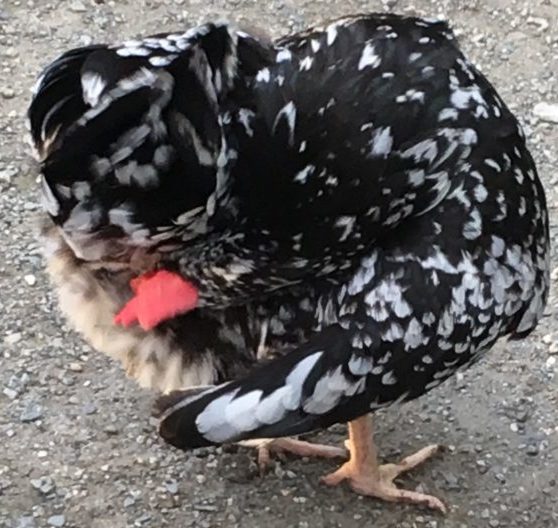
Photo: Daphne Cybele
There are many more opportunities for a good chicken dust bath in summer, spring, and fall, because you don't have to worry about frozen ground, but wet and muddy ground can be troublesome for dust bathing.
The two winter dust bath solutions above should also help in summer, spring, and fall during times when the ground isn't quite dry enough for a good dust bath.
Want to create an even better dust bathing area? Check out the post on Fresh Eggs Daily for a log-lined, umbrella-sheltered dust bath spot!
Is All Dirt Good for a Chicken Dust Bath?
Our soil is sandy, so it's just right for chickens to dust bathe in. Most soils will be perfectly fine. If you have heavy clay soil, you might want to amend it a bit with play sand (play sand, a.k.a builder's sand
is what you want because it does not have added salt, which would irritate skin — many of which can be bought on Amazon).
You can also get a load of sand brought in and make a sand pile for the chickens, to make it easier for the chickens to get a good dust bath if your soil is heavy clay (clay soil particles tend to clump together).
If desired, you can also add herbs, such as oregano, to the dust bath.
Harvey Ussury recommends peat moss as a good dust bath material, so you might try that in a coop dust box, or to amend your soil in the chicken run. Wood ash from a fireplace or wood stove (thoroughly cooled and with no remaining embers or coals), bits of charcoal, and food-grade diatomaceous earth (also known as DE) are other additives that are used in small amounts, but you should be really cautious in using these or any other additives.
For example, wood ash and DE contain very fine particles, which are very irritating and even very unhealthy for your lungs to breathe in. If you need to use a mask to apply it, you and your chickens shouldn't be breathing it in. Research and follow your best instincts and sources you trust. When in doubt, don't use it.
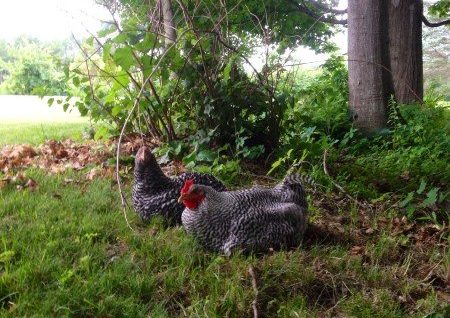
Photo: Daphne Cybele
So there you have it, everything you need to know about a chicken dust bath from A-Z, and how to make sure your backyard flock as access to a healthy dust bath no matter what the weather or the season.
Do you have a chicken dust bath inside the coop? Let us know how you made it on the Wide Open Pets Facebook page!
This article was originally published May 2, 2019.
READ MORE: The Ultimate Checklist to Have the Best Chicken Coop in All the Land
